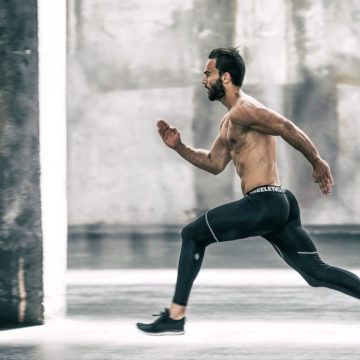
- Different physical exercises such as endurance training, resistance training, and high-intensity interval training are becoming popular.
- A new study has shown which among the three types of exercise is best for keeping the body younger.
- The study included 266 young and healthy participants who were assigned into four groups.
Exercise provides a lot of benefits. It can prevent the development of many diseases, help control weight, promote better sleep, boost energy and improve brain function.
More people have been engaging in exercises like endurance training, resistance training, and high-intensity interval training. Endurance training includes activities that aim to improve a person’s stamina. These activities include cycling, running, and swimming. Resistance or strength training, like weightlifting, increases a person’s physical strength. A high-intensity interval training or HIIT includes doing intense exercises in short intervals, followed by rest and recovery, then doing intense workouts once again.
Cellular Aging and Exercising

A study by researchers at Leipzig University in Germany shared how different exercises affect the body. Together with other researchers from various institutions, the team looked at different physical activity types and their effects on cellular aging.
The study focused on the telomere length and telomere activity in participants who do exercises, specifically resistance, endurance, and high-interval intensity training. Telomeres are structures that protect the genetic material of every cell. When telomeres shorten, the genetic material will also start disintegrating, signaling that the cell is growing old and will soon die. The enzyme telomerase helps keep telomeres long, but it also becomes less active as people grow older.
Which is the best?

The study, which was led by Prof. Ulrich Laufs, was published in the European Heart Journal. Two hundred sixty-six participants who were young, healthy but are leading an inactive lifestyle were included. The participants were randomly assigned in four groups, namely:
-
- Endurance Training Group. Participants were asked to do endurance training such as running.
- HIIT Training Group. Participants did warm-up exercises, followed by four cycles of high-intensity running alternated with slow running and a rest time to complete the routine.
- Resistance Training Group. Participants used machine workouts and did back extensions, crunches, lying leg presses, pulldowns, and seated chess presses, extensions, leg curls, and rowing.
- Control Group. Participants did not do any training and continued to be inactive.
The training groups spent 45-minute exercise sessions three times weekly. Out of all the participants, 124 were able to complete the study, which lasted six months.
To obtain results, the investigators collected the participant’s blood samples, once at the start of the study, then another one 2-7 days after the last training session at the end of the study. The results showed that telomere length and activity increased for those participants under the endurance and HIIT training group.

Prof Laufs explains that telomere length significantly increased and telomere activity increased threefold in participants who did endurance and HIIT training. Telomere length and action are essential for cellular aging, regenerative capacity, and healthy aging, in general.
On the other hand, resistance training and control groups did show the same results. The investigators suggest that endurance and HIIT training affect the levels of nitric oxide on the body. These free radicals influence blood vessel function and blood circulation that could affect cell aging. Prof Laufs also shares that the study’s result may also help future studies focus on telomere and its importance on cellular or biological aging.
